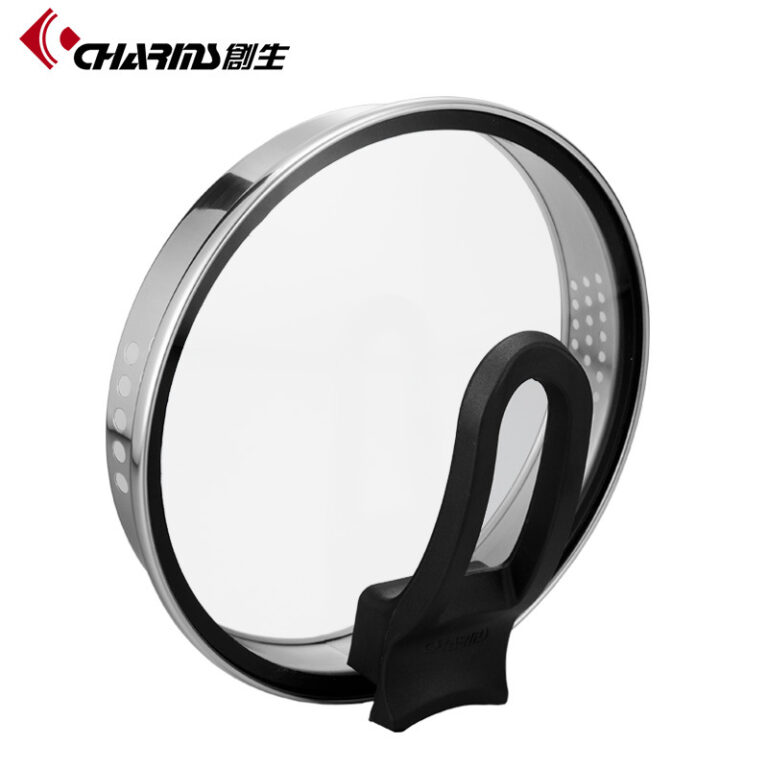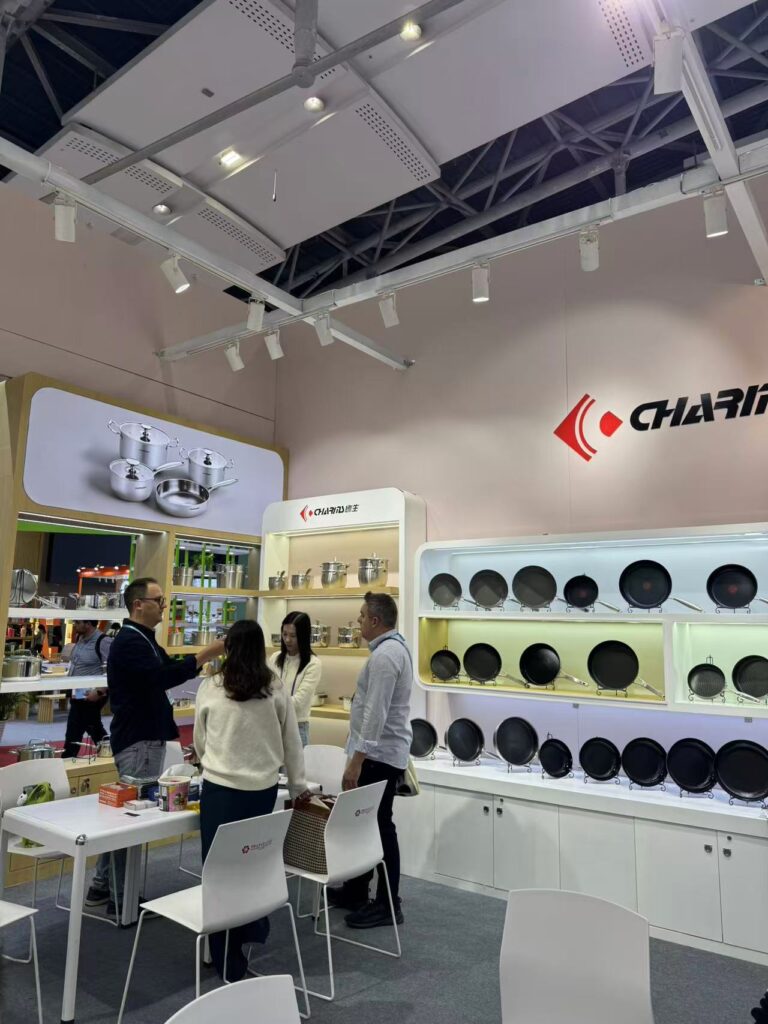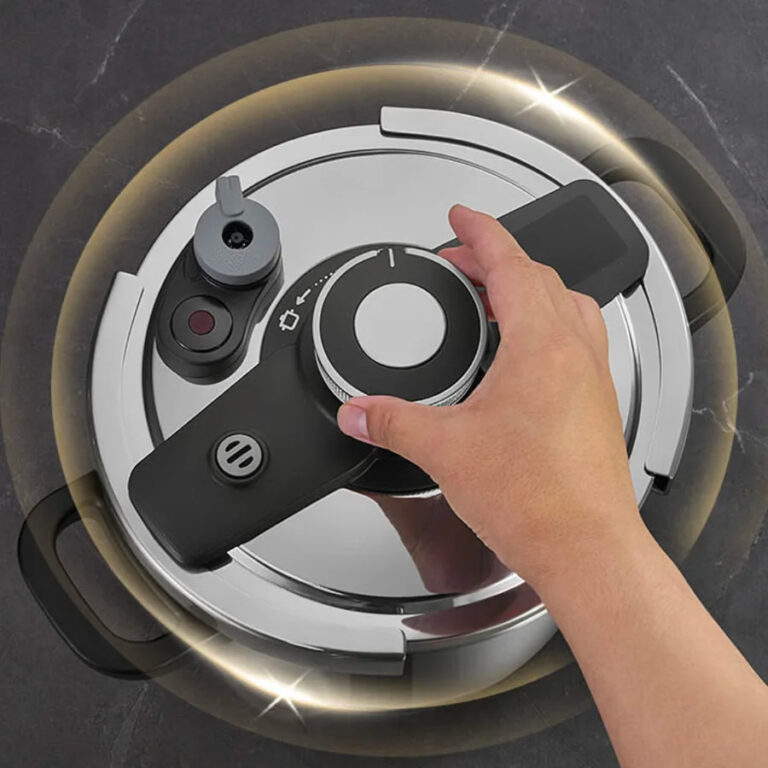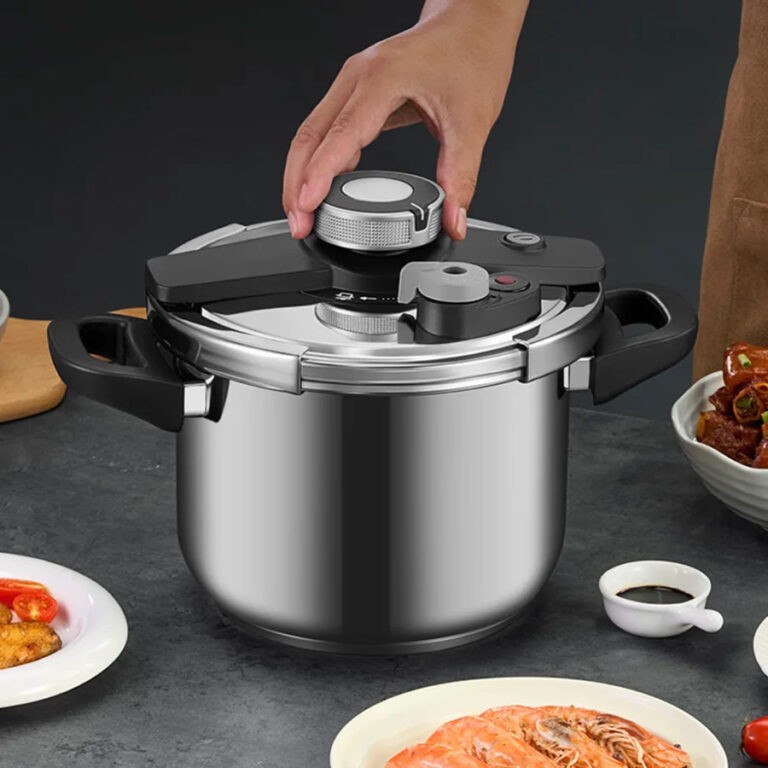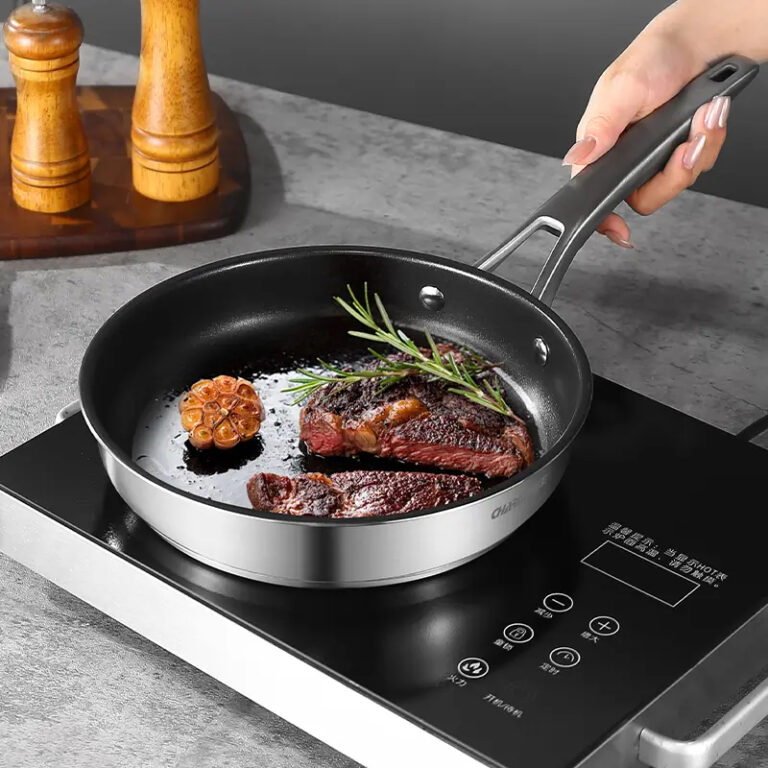Do you know the differences between 304 and 316 stainless steel? When you purchase stainless steel cookware for your brand or distribution business, how do you choose between 304 and 316 stainless steel? This feels like a technical decision. However, this is also a strategic issue. The materials you choose will not only affect the durability and performance of your products but also your brand reputation, customer satisfaction, and long-term profitability.
We are a cookware manufacturer with over 30 years of experience. After nearly three decades of dealing with stainless steel, we have witnessed firsthand how subtle differences in alloy composition can translate into significant differences in market performance. This article is not merely a theoretical comparison; it also combines technical clarity with real-world insights to help you make confident choices.
Table of Contents
Toggle1.What Is 304 Stainless Steel Cookware?
304 stainless steel, also known as 18/8 stainless steel, contains approximately 18% chromium and 8% nickel. It is one of the most common stainless steels used in kitchenware worldwide.
Key features include:
-
Strong corrosion resistance under normal kitchen conditions.
-
Good durability and resistance to staining.
-
Attractive, polished appearance that maintains its shine with proper care.
Because of its balanced performance and relatively lower cost, 304 stainless steel is widely used for mid-market cookware collections and everyday kitchen tools.
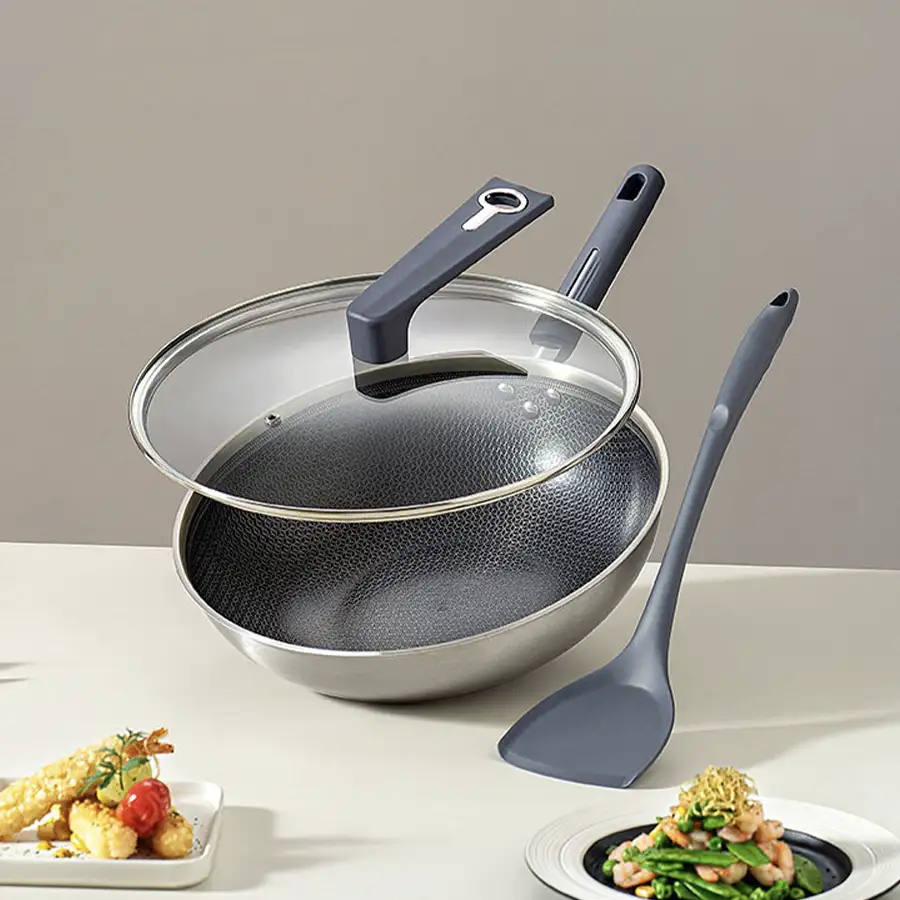
2.What Is 316 Stainless Steel Cookware?
316 stainless steel, often referred to as 18/10 stainless steel, includes around 18% chromium, 10% nickel, and an additional 2–3% molybdenum.
The addition of molybdenum is what sets 316 apart. It enhances resistance to corrosion, especially from chloride-rich or acidic environments. In the cookware industry, 316 is considered a premium option, well-suited for professional kitchens, luxury markets, and regions with humid or coastal climates.
3.Comparison of 304 vs. 316 Stainless Steel Cookware
| Aspect | 304 Stainless Steel | 316 Stainless Steel |
|---|---|---|
| Composition | 18% chromium, 8% nickel | 18% chromium, 10% nickel, 2–3% molybdenum |
| Durability | Durable for most cooking tasks; suitable for daily household use | Enhanced endurance; ideal for demanding environments and professional kitchens |
| Cooking Safety | Food-grade safe; minimal nickel release under normal use | Food-grade safe; higher nickel content but reduced leaching due to stronger corrosion resistance |
| Corrosion Resistance | Good in neutral conditions, but may pit in salty or acidic environments | Superior resistance to chlorides and acids; excellent for coastal and humid regions |
| Maintenance | Requires standard cleaning and occasional polishing to stay bright | Easier to maintain; retains shine longer with less effort |
4. What About Heat Conductivity: 304 vs. 316?
Both 304 and 316 stainless steels have relatively low thermal conductivity compared to copper or aluminum. For this reason, high-quality cookware typically uses multi-layer construction—combining stainless steel with aluminum or copper cores to achieve even heating.
In terms of heat conductivity:
-
304 and 316 perform similarly.
-
The difference lies in durability and corrosion resistance, not cooking performance.

5.Which Cookware Is More Affordable: 304 or 316?
Cost remains one of the most decisive factors:
-
304 stainless steel cookware is significantly more affordable, making it suitable for large-scale retail and mass-market distribution.
-
316 stainless steel cookware comes at a premium due to higher nickel and molybdenum content, as well as the added manufacturing complexity.
Businesses aiming to penetrate the budget or mid-market segments typically choose 304, while brands focused on luxury, professional, or export markets lean toward 316.
6. Who Should Choose 304 Stainless Steel Cookware?
304 stainless steel is well-suited for:
-
Brands targeting everyday households.
-
Retail chains prioritize competitive pricing.
-
New product lines entering general consumer markets.
It provides a balance of performance and affordability that appeals to a broad customer base.
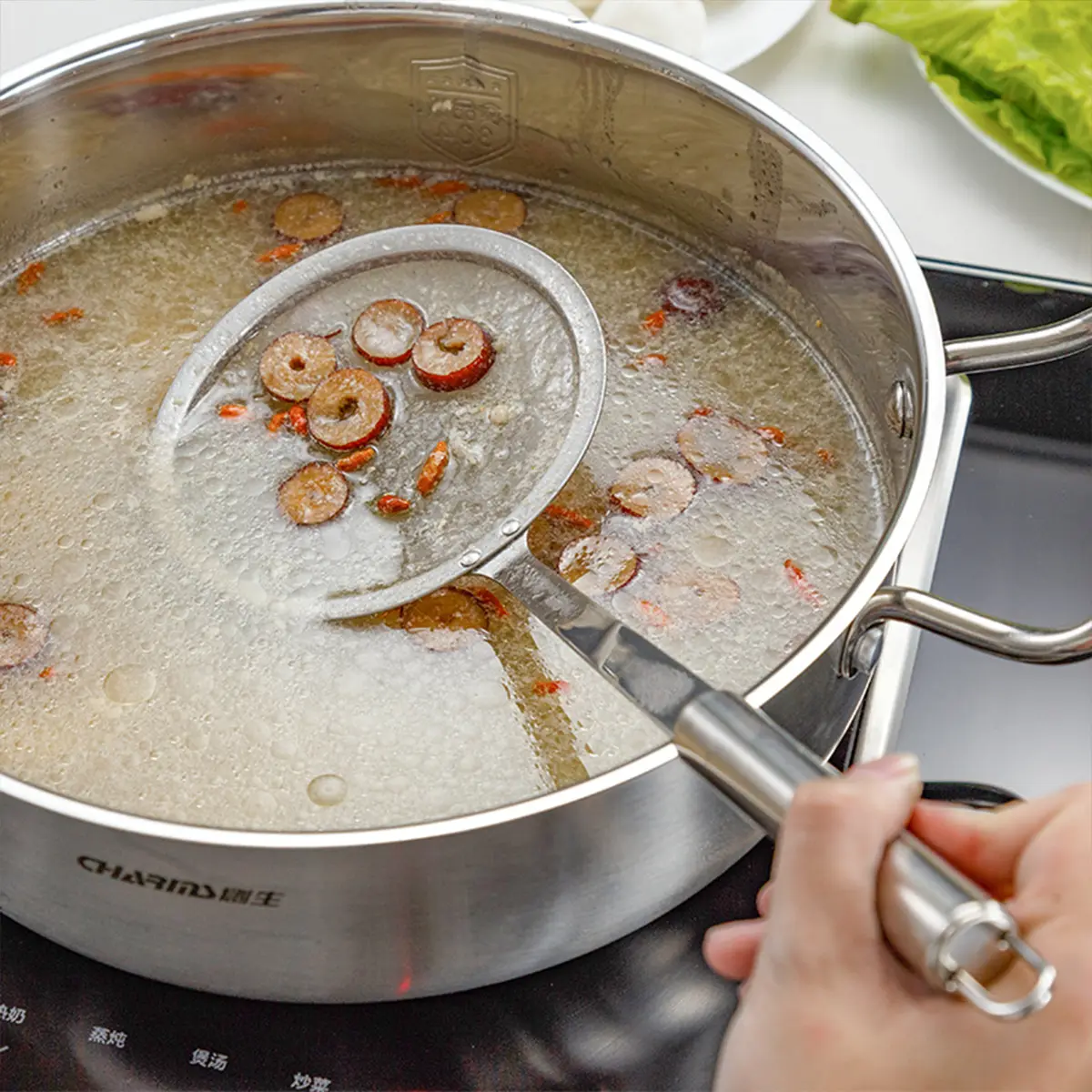
7.How to Purchase 304 Stainless Steel Cookware?
When sourcing 304 stainless steel cookware for your business, several key factors should be considered to ensure product quality, supply stability, and long-term partnership value.
-
Material Certification:Always request official material test reports (MTR) from the supplier to confirm that the cookware is manufactured using genuine 304 stainless steel. This ensures compliance with international food-safety standards.
-
Manufacturing Process:Evaluate whether the supplier uses advanced production techniques such as multi-layer composite bases and high-frequency brazing. These processes enhance heat distribution and durability, making the cookware more competitive in the market.
-
Supplier Experience:Work with manufacturers that have proven expertise and stable large-scale production capacity. Experienced suppliers not only guarantee consistent product quality but can also provide valuable insights into market trends and product design.
-
Supply Chain and Delivery:Reliable logistics and timely delivery are critical for B2B buyers. Assess whether the supplier has efficient shipping channels and the ability to handle bulk orders without delays.
-
After-Sales Support:Strong technical support and responsive customer service are essential for long-term cooperation. A supplier that offers warranty terms and ongoing assistance will add more value to your business.
For professional kitchens, high-end restaurants, or humid environments, however, 316 stainless steel is the better investment, ensuring longer service life and reduced replacement costs.
8. Conclusion
When you are choosing between 304 and 316 stainless steel kitchenware, it is not merely a matter of technical specifications – it is a strategic business decision. 304 offers cost-effectiveness and broad market appeal, while 316 represents durability, high-end positioning, and long-term brand value.
The right choice you make depends on your target customers, sales channels, and brand strategy. By aligning material selection with your market goals, you can not only ensure product performance but also maintain continuous customer trust, enhance competitiveness, and bring greater profitability to your business.
If you are interested in our products, please contact us!
Charms Cook is a manufacturer with over 30 years of experience, offering customization services!


